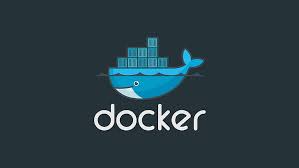Introduction to Kubernetes
Kubernetes is an open-source platform designed to automate the deployment, scaling, and operation of application containers. It groups containers that make up an application into logical units for easy management and discovery. This blog post will introduce you to Kubernetes, its core concepts, and how to get started with Kubernetes for your containerized applications.
Table of Contents
➡ What is Kubernetes?
➡ Why Use Kubernetes?
➡ Installing Kubernetes
➡ Kubernetes Basics: Pods and Nodes
➡ Your First Kubernetes Deployment
➡ Managing Kubernetes Clusters
➡ Kubernetes Services and Networking
➡ Conclusion
What is Kubernetes?
Kubernetes is an open-source platform designed to automate the deployment, scaling, and management of containerized applications.
It helps in managing clusters of containers, providing a higher-level abstraction for running distributed systems.
Why Use Kubernetes?
Scalability: Kubernetes can scale applications up and down based on demand.
Self-healing: Kubernetes automatically replaces and reschedules failed containers.
Declarative configuration: Kubernetes uses declarative configuration to manage infrastructure.
Multi-cloud capability: Kubernetes can run on various cloud platforms and on-premises environments.
Installing Kubernetes
To get started with Kubernetes, you need to install it on your machine or set up a cloud-based cluster. Kubernetes provides various installation options, including:
Kubernetes Basics: Pods and Nodes
Pods: Pods are the smallest deployable units in Kubernetes. A pod represents a single instance of a running process in your cluster.
Nodes: Nodes are the worker machines in Kubernetes. Each node runs at least one pod.
Your First Kubernetes Deployment
Let's deploy a simple Nginx server on Kubernetes. Open your terminal and create a deployment using the following command:
Run this command: ***kubectl create deployment nginx --image=nginx***`
This command does the following:
1. Creates a deployment named 'nginx'.
2. Uses the official Nginx image from Docker Hub.
Managing Kubernetes Clusters
Here are some basic commands to manage Kubernetes clusters:
- List all pods: `kubectl get pods`
- List all nodes: `kubectl get nodes`
- Describe a pod: `kubectl describe pod <pod_name>`
- Delete a pod: `kubectl delete pod <pod_name>`
Kubernetes Services and Networking
Kubernetes Services are an abstract way to expose an application running on a set of Pods. Here’s a simple example of a `service.yaml` file for a web application:
service.yaml
apiVersion: v1
kind: Service
metadata:
name: my-service
spec:
selector:
app: MyApp
ports:
- protocol: TCP
port: 80
targetPort: 9376
Conclusion
Kubernetes is a robust tool that can simplify the deployment and management of containerized applications by providing a scalable and self-healing infrastructure.
By understanding the basics of Kubernetes pods, nodes, and services, you can start leveraging the power of Kubernetes for your projects.
As you become more comfortable with Kubernetes, you can explore advanced features like persistent storage, configuration management, and custom resource definitions.
More Blogs

Getting Started with Docker for Beginners
In the rapidly evolving world of software development, Docker has emerged as a critical tool for creating, deploying, and managing containerized applications. Containers allow developers to package applications with all the necessary dependencies, ensuring consistency across different environments. This blog post will introduce you to Docker, its fundamental concepts, and how to get started with Docker for your projects.

Machine Learning Basics: An Introduction
Machine learning is a branch of artificial intelligence that enables computers to learn from data and make decisions or predictions without being explicitly programmed. This blog post provides an introduction to machine learning, its fundamental concepts, and applications.